Autumn in the 72 Seasons
Welcome to Autumn, our final adventure in nature. This season has an added layer of poignancy, as there is a sense of ending running throughout. Our seasonal seekers were really engaged this season though, there was a lot of spotting and sharing. Maybe they were making the most of the project while it lasted? Maybe it was more needed as Autumn included another lockdown? Maybe we just got the seasons spot on this time? Maybe the group had got to know each other much better and felt more comfortable together? Maybe it was all of the above.
Season; 3 – 7 October: Conkers Peek from Spiky Shells
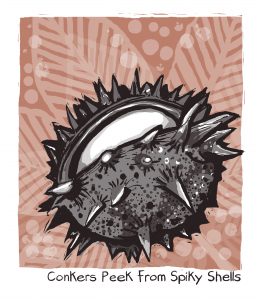
Who doesn’t love conkers? They are one of the best toys we are given from nature in my humble opinion. I think a ‘horse-chestnut’ or ‘conker’ tree is probably the most commonly identified tree in the UK. Then there is the joy of opening the spiky shells and finding a big one, or a triple, or a double and the beautiful colours and shiny ness of new conkers too. It just feels like the right season to launch Autumn.
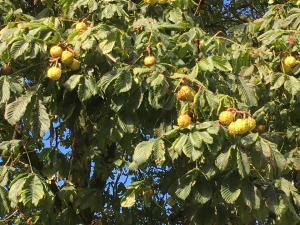
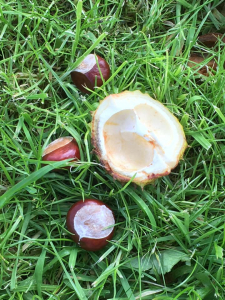
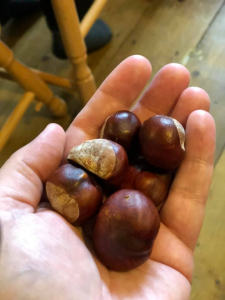
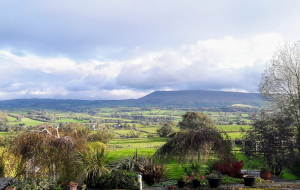
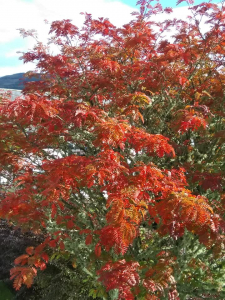
Images; conkers in the trees and conkers around a shell taken 4 October, conkers in my hand taken 6 October, expansive and gorgeous Pendle Hill view taken 6 October and red autumn leaves also taken 6 October.
In Japan, in the original ancient natural calendar, this season is ‘The Paddy Water is First Drained’. That is a real culture difference, isn’t it. Paddy fields are not in our national psyche, in the same way that conkers maybe aren’t in Japan. I mentioned in a previous post, that the seasons are inspired by the ancient Japanese calendar, but are mostly translated into nature based happenings which are easy to spot, without having to go too far into the countryside. We have tried to keep as many as possible from the Japanese seasons, but some just can’t work here – The Elk Sheds its Horns and The Bear Retreats to its Den are both seasons in this period in Japan, for example, and I’ve not spotted many Elk or Bears in my everyday wanderings!
Season; 8 – 12 October: Red Leaves Glow
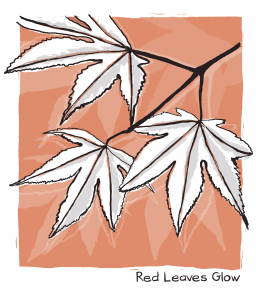
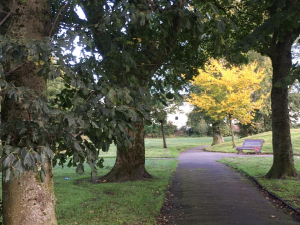
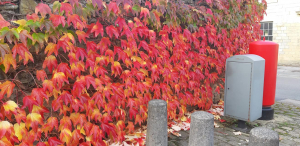
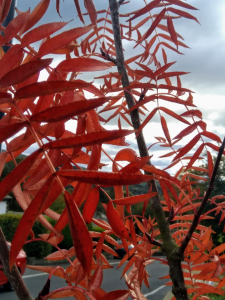
Images; yellow autumnal leaves from 8 October, red leaves on building taken 10 October and close up of red leaves from 12 October.
This was a good season which was kept as 100% agreed that this was happening. Many red glowing leaves were found, on buildings, peeping over walls, amongst forests and towering over parks and car parks. There was even some spotted on the way to the bus stop, which is my consistent litmus test. Can you see this season if all you do is walk to the bus stop? If yes, it fits, if no, it does not. This season, that was again more vital than ever I could have anticipated. This area of Lancashire, around Pendle Hill has had some of the strictest restrictions for almost all the year, and little exploration has been allowed.
Season; 13 -17 October: Leaf Peepers Admire Autumn Colours
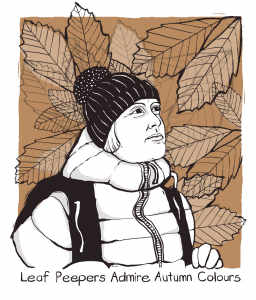
Natures palette is really vibrant and wonderful at this time of year, and it’s a great idea to admire some colour and enjoy the show the trees put on for us. Leaf peeping is quite an American term, but it just means enjoy looking at the leaf colours, and maybe take a photograph. It’s also something that changes over time, you can look each day and note subtle differences, or look at groups each week and note sweeping changes.

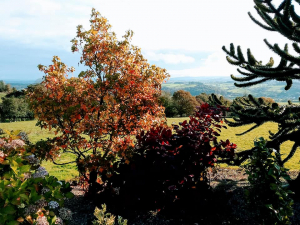
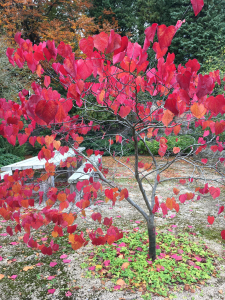
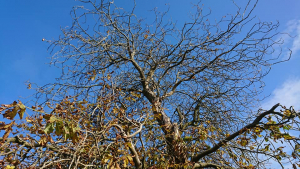
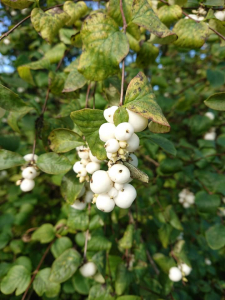
Images; a hairy and later flowering clematis 13 October, orange leaved tree with red leaved shrub taken on 16 October, vibrant red tree also taken 16 October, bare tree from the same day, bright white snowberries also from the same day.
Obviously all our seekers were out and about on the 16 October making the most of the blue skies and crisp light. Many of them told us they enjoyed kicking the leaves which had fallen, and a couple suggested that the season should include that, but I try and keep the seasons something that anyone can enjoy, even if not able-bodied or able to get out and kick leaves.
Season; 18 – 22 October: Holly Berries Feed the Birds
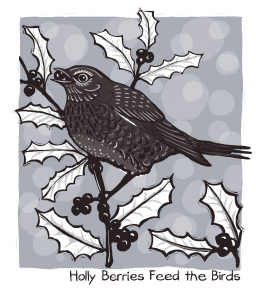
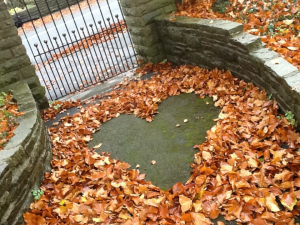
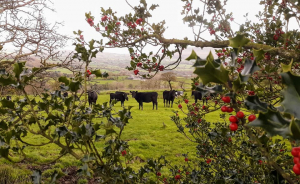
Images; leaves taken on 20 October, cows taken on 22 October. I love how creative and nicely framed these images are.
People agreed with the season but obviously found to tricky to photograph – they got there in the end, as you will see a little further down.
72 Seasons is primarily a research project. We wanted to know if we could bring people closer to nature, if we could make people feel more connected to nature and to measure their health and wellbeing as we did that. As I write this blog, we are also carrying out analysis on all the results. As part of that work I keep reading the comments people have made during the year.
This season people were telling us that “The seasons seem to be back in synch now after our blip over the summer months when things didn’t seem to fit our 72 seasons very well! Autumn is fitting better! 😁”
Others mentioned “The nights are drawing in and the leaves are dropping from the trees” and more that “The Redwings are flying around the hedgerows on Billington Moor having arrived from Scandinavia. The Hawthorns are shedding their leaves now as are the Sycamores and Birch.” I really love the range of people taking part. Some are very knowledgeable, others like detail and others like big sweeping changes “Getting darker earlier and a chill in the air.” Some notice animals, some notice birds, some notice flowers.
“Squirrels burying nuts”
“The last of the blackberries on the country lanes, which I have been enjoying on my walks for the last few months.”
“Time for planting bulbs”
“I have seen lots of different formations of geese flying over”
72 Seasons is a project that anyone can engage with, whatever their expertise or interests. It designed to work for a really wide variety of people.
Season; 23 – 27 October: The First Frost Falls
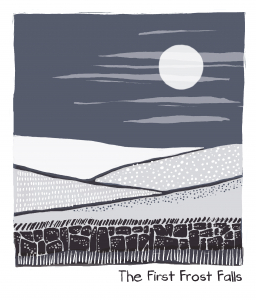
Ahh, the crispness of a frost. When the air feels sharper and everything is outlined and clearer! This season was one of the trickier seasons, it was kept but with only 58% of the seekers agreeing. Maybe there were pockets of places which had some frost, and other areas that didn’t? Maybe there wasn’t any frost at all but most people thought it was a blip in the weather and that frost would return next year.
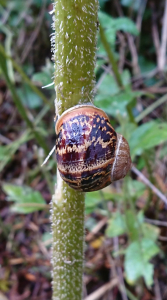
Image; snail defying gravity with ease 24 October
Season; 28 October – 1 November: The Pumpkins are Carved
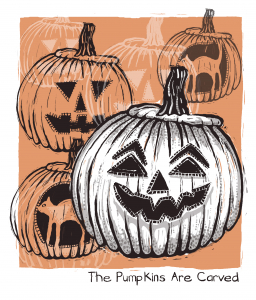
I mentioned in the Summer seasons (you can read that previous blog post here) that I chose the first July season to be one of my favourite things. This one is my youngest’s favourite. He loves Halloween a lot. We watch a lot of American Halloween cartoons all year round and I know some of the most popular Halloween songs off by heart now, including such dreadful classics as ‘Halloween night’ and ‘Scary, flying shark’. Did you know there was a tradition of singing? If you didn’t, its coming! We always end up with what’s popular in America over here eventually don’t we? While thinking about this season, is it nature? Pumpkins being ripe is probably a season, but not something you can easily find on a walk to the bus stop. This is quite a man made and nature combined season. It’s the only season that is a bit on the cusp, but I have to admit I wondered how our seekers would find this one? Yet this season was kept with 100% agreed.
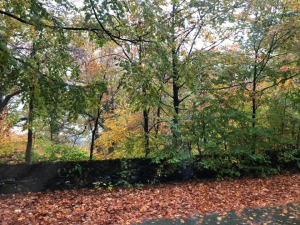
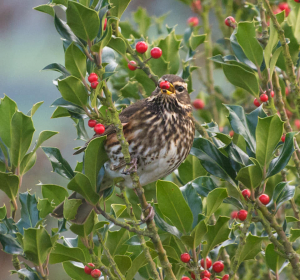
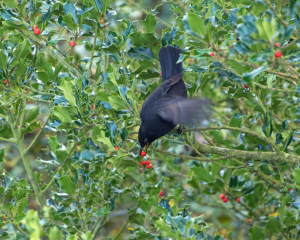
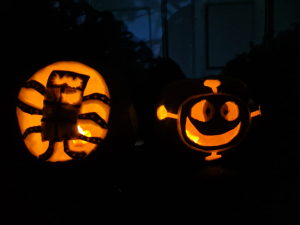
Images; autumn leaves on the floor 30 October, bird eating holly 30 October, another bird eating holly also on 30 October and pumpkin image taken on 2 November.
Also, our seekers spotted birds eating holly berries now. These are a couple of great action shots.
Season; 2 – 6 November: Hedgehogs Shut their Doors
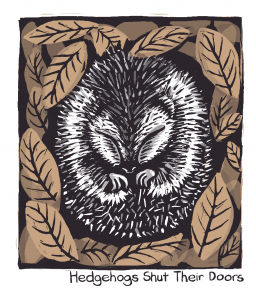
Well certainly a challenge to photograph this official season! Not sure it’s actually possible. Thank goodness we have Cath Ford drawing all the seasons, I mean not only is she brilliant, but it brings all these trickier seasons to life along with the others. It’s also a nice season to imagine, hunkering down and hibernating and time to be cosy.
You can see colour changes in the photographs as you look through a whole season. The green starts to go and browns and oranges start to arrive and this selection of images really shows that.
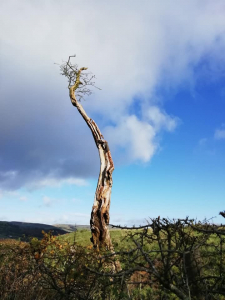
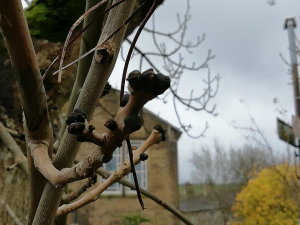
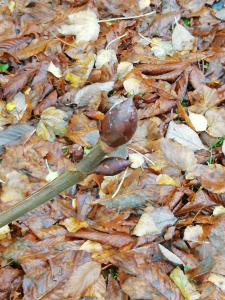
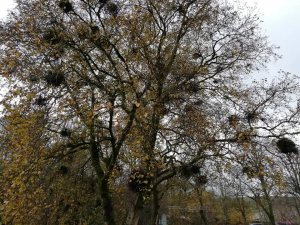
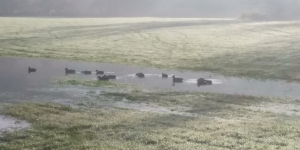
Images; bare tree with blue sky taken 4 November, black ash buds 4 November, horse chestnut buds and witches broom in tree also from 4 November and frost, mist and flooded fields from 5 November.
Witches broom is a deformity in a woody plant, typically a tree, where the natural structure of the plant is changed. A dense mass of shoots grows from a single point, with the resulting structure resembling a broom or a bird’s nest. It is sometimes caused by pathogens. I used to think these were birds nests, but I love the name, witches broom. It’s evocative, and descriptive, and oh-so-apt for Pendle, which is internationally famous for witches of course.
This season coincided with back into national lockdown, and our seasonal seekers had to explore even more locally than before. Thank goodness there is always something to look at in nature. We have certainly needed the comfort and reassurance of something happening as usual this year.
Season; 7 – 11 November: The Trees are Bare
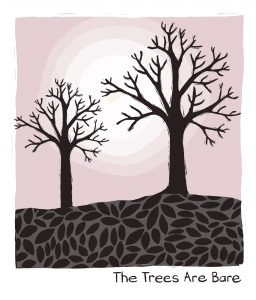
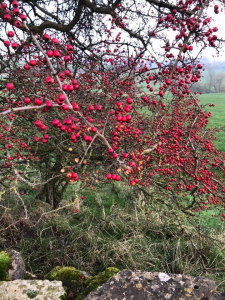
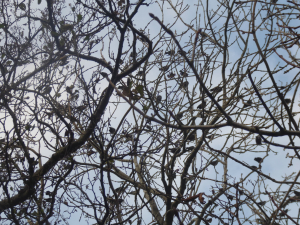
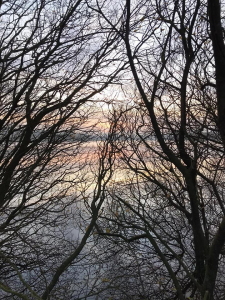
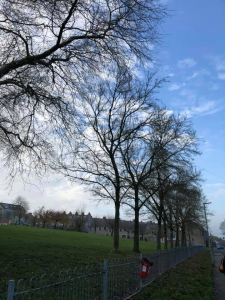
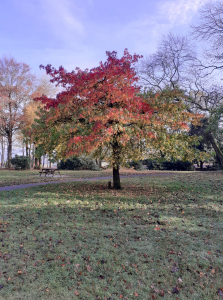
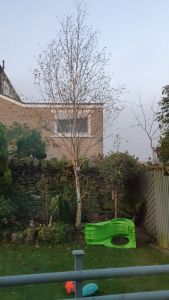
Images – all of the above taken on 7 November; tree full of red berries, bare trees full of starlings, bare trees in front of sunset, bare trees in the park, colourful gum tree, and bare tree in garden.
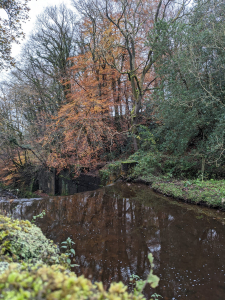
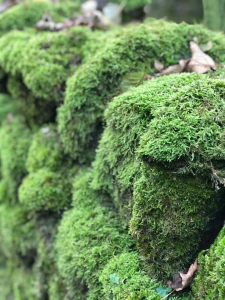
Images; leaves clinging to trees on 8 November, green moss on dry stone wall 8 November.
These two images both feel very peaceful. It is quite a calm season, having bare trees.
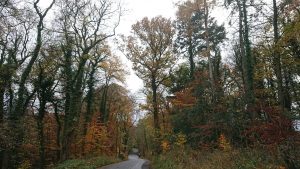
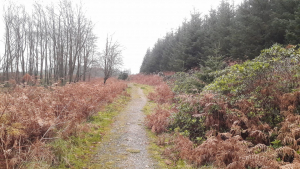
Images; two different paths through trees on 9 November
I do really love how the paths here are so different, yet taken on the same day. One with mixed colours and shapes and one orderly, like each one has a wood artist, one who is messy and one who is ordered! I wonder if one is a managed forest and one not, or if it something to do with wind and seed dispersal many years ago.
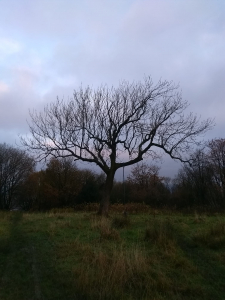
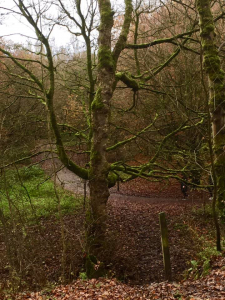
Images of two different bare trees, left from 9 November and right from 10 November.
When the above left image was shared, our seeker captioned it ‘Moody Bare Tree’ and it got me thinking – they have a bit more personality when they’re naked! What do you think? Do you see a different side to the trees when they lose their leaves? Have you noticed this before? This is how the whole project works by the way, each season is designed to encourage you to either look at something new, look at a change or to look again at something you know well. The whole project is funded by The National Lottery Heritage Fund, who fund a lot of building work and once told me that people always tell them they look up more after a place has been ‘done up’. Well, this project is about looking up, down, sideways and again!
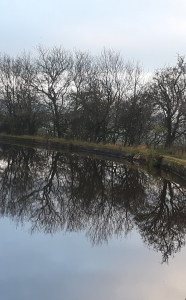
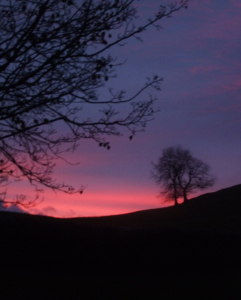
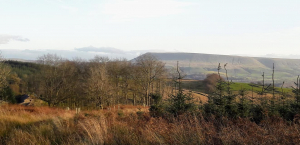
Images; Bare trees with crisp reflection taken on 10 November, autumn sunset featuring bare trees from 11 November.
We haven’t had many sunset and night images shared, it was lovely to see this one.
Season; 12 – 16 November: Honking Geese Fly By
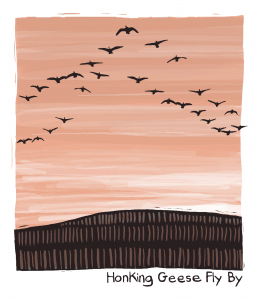
This is a new season, which replaced one which didn’t make the final cut. The abandoned one was ‘The Land Freezes’. It feels quite dramatic to say that. I know the weather seasons have been harder for people than the ones about things. Wonderfully explained by one of our seekers “I think that because there have been more weather ones there is less push to go out and look for specific things. I like looking for things!” I replaced this with a season which encompasses sound and imagery too, and hopefully fills skies across Pendle and nearby. I personally live in an urban part of the area, and the geese fly over my house twice a day, at dusk and at dawn. It’s quite a vibrant sound, and the formation is just like Cath’s drawing above. If you have Instagram, think of following her work on there.
Fun fact, I thought of Cath’s Instagram (which is here) because at the moment she keeps sharing her nail varnish and clothes combinations and my nails are currently painted in the exact shade of the sky above! We know how to live a rock and roll life in lockdown!!
In all seriousness though, 72 Seasons has had an added level of importance in lockdown, and during covid. It became a comfort and inspired people. One seeker told me they were going to take up a photography course soon after enjoying taking photographs of these seasons. Another said “I’m consciously trying to notice more and have started to do little What’s app quizzes with families like “what 5 birds do you think I saw this morning”. Something fun and cheerful. 2nd wave is definitely harder!”
Season; 17 – 21 November: Puddles Galore!
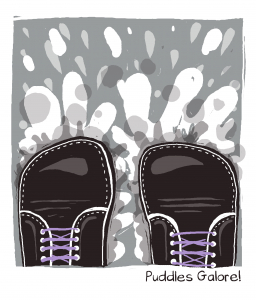
Who doesn’t love splashing in puddles? Not us, as 100% of people agreed with this season. There is a Scandinavian saying that there is no such thing as bad weather, just inappropriate clothing – which might be said everywhere it’s cold and rainy to be honest. But, it’s certainly something I have appreciated since moving to the far east of Lancashire about 15 years ago. It does rain, a lot. So you have to put on some weather proof clothing and go out regardless, as if you wait for nice days, you might be waiting a long time. Of course, as soon as I mention that, there is a day of glorious weather!
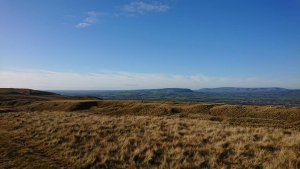
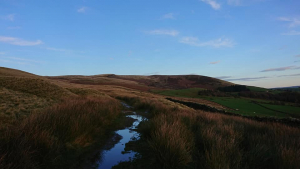
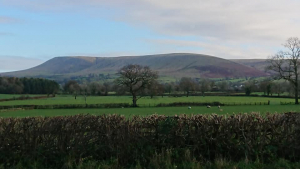
Images; Blues skies and gorgeous weather and views of the rolling countryside and moors taken on 19 November
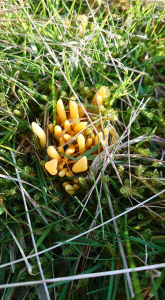
Also spotted on the 19 November, is this bright yellow waxcap fungi. Waxcap fungi like grasslands with poor nutrients and because of that are quite hard to spot, and are a species in decline. There just aren’t enough places left which are not used in some way. You can read more about waxcaps here.
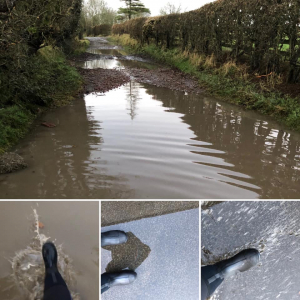
Image taken on 21 November ‘Wet Puddle Walk’
This was one of my photographs, I had some fun out splashing in puddles and shared a collage. Also showing off my new wellies too – they are Muck Boots are are great, really thick soles so your feet don’t get cold, but it does make them them heavy to walk in. “Nice new wellies! And thanks for enjoying the puddles for us in them.” one seeker said. But I told the group I wasn’t brave enough to walk through the middle of the top one! I had visions of disappearing down up to my neck, which was a scene I remembered laughing at in The Vicar of Dibley, which is an old tv show now. One person replied “Exactly what happened to our daughter when she was about 18 months old – she disappeared into a puddle she jumped into (the drain cover had also disappeared) Thankfully she was still holding my hand.” Can you imagine how much your heart would be beating if that happened? I’d be too scared to let them splash in puddles. So, puddles galore but stay safe folks!
Season; 22 – 26 November: The Rainbow Hides Unseen
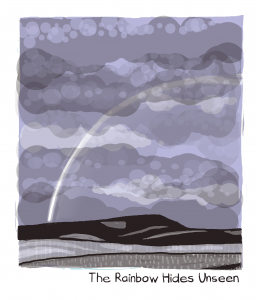
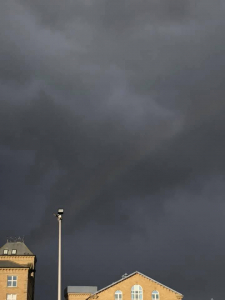
Grey skies with rainbow from 22 November.
Hidden rainbows was the season we went out to meet three seekers in person, don’t worry, this was in between lockdowns and we stood outside their homes, and travelled in separate cars, so it was all very Covid-secure. What it was, through, was a really marvellous day out! I started working from home full time on the 16th March 2020, and this day, the 27th November was the first day I had left the office for work. I was so excited! I asked three different seekers to talk on camera about their experiences during the year. I was really keen to do this while the project was still happening and to capture the project, live. Our three interviewees; Jackie, Caroline and Sue, were wonderful hosts, making us all feel welcome and pretty hardy agreeing to stand outside with us for the whole couple of hours we were there. The wonderful Caroline and Dave from Huckleberry Films (their website is here) did all the hard work, setting up cameras and sound equipment, recording, and then creating the film. I just chatted to people and asked some questions. I’m really grateful to everyone who made this happen, and also to Cathy from the Pendle Hill Landscape Partnership (their website is here) who supported the film financially, through National Lottery Heritage Funds.
I do hope you have watched the film, it’s incredibly heartwarming and a lovely piece of work, telling the story of noticing nature and how connection matters.
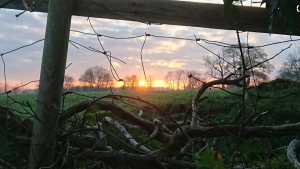
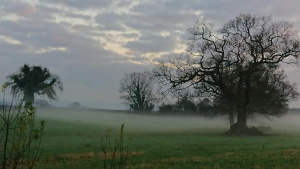
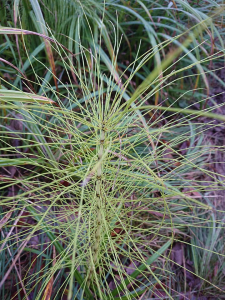
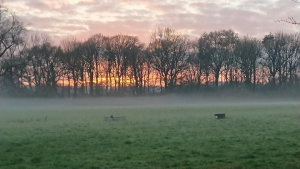
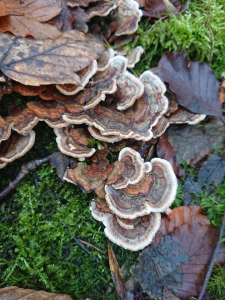
Images above all taken on 26 November; autumn sunset through a tangled frame, misty field, giant horsetail, a misty sunset and turkey tail fungus.
Talking about the giant horsetail one seeker explained it was a “stunning and an incredible plant, although not keen on them in my garden” and another that “I’d never seen them before. Certainly, wouldn’t want them in my garden either!” and it was through lots and lots of moments like this, our seekers connected with each other. I am still sad that we weren’t able to get the seekers to meet each other in person, but we proved the resilience of humans, and nature, and connection can cut through that.
Season; 27 November – 1 December: The North Wind Brushes the Leaves
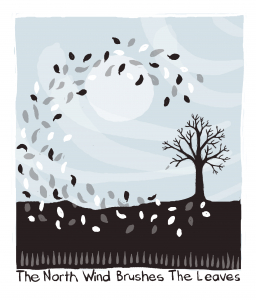
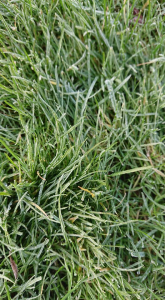
Image; Frost tipped grass from 1st December
As December began, we were coming to the end of the research project, and this was our last month together. This was when we asked people what they might do next year as the project ended?
Just carry on looking at nature
I’ll be doing more noticing
Will miss it! 72seasons has got me thinking about doing a photography course, or just learning a bit more about how to take better photographs of the natural world.
I’ll just keep observing!
I would miss it if it disappeared. I hope that it continues so that we can see which Seasons have been adopted / adapted / thrown out / replaced. It’s provided a welcome break from Covid and a great opportunity to engage with the natural world.
Sad. 😭 Keep looking out for detail and not lumping seasons together – hoping this will help get me through winter which I always find hard. Thank you. I have enjoyed it.
I have enjoyed the project. Observing wildlife was something I did before and will continue to do but monitoring the seasons in such detail is something I may continue with.
Carry on watching the seasons unfold – but I don’t wish to carry on with this project
I feel really sad 😢 Not thought further …
Birds sightings trees coming into bud sighting of flowers or wild herbs
No issues. Carry on enjoying the great outdoors
If you could produce a calendar I would continue doing it next year.
I think it’s really sad. How will we get through January and February!! Thank you so much for doing this project .
No
I feel sad, it has really kept me in touch with the outdoors and i have enjoyed the 72 seasons. Next: I am going to spend more time outdoors and notice the mini seasons more
I will continue taking photographs and watching for changes again as I walk in the countryside. It would be good if the Facebook group could continue to post comments and photos and keep in touch. I think I will take up diary writing next year as I haven’t done that since a teenager. I wish I had started this year. It would have been interested to look back on. The project has been very good for me and helped to keep me positive. Thank you Kirsty. Oh and I’ve enjoyed the art work so much and if a calendar was made I would love a copy to keep one as a reminder.
I will miss it ,but I will continue to walk one hour every day and will continue to take my daily photo for the river ribble Trust
I will miss seeing the pictures. Not thought about next year yet!
Will miss it but hopefully carry on noticing the world around me
No thoughts but have been on walks and taking notice of my surroundings
I have noticed most things out on dog walks , so every day. It’s been such a good project enabling you to observe more instead of walking past. We will keep walking Pendle and trying the different loops. We are still discovering different parts , even now !
The above are all the answers we received. Although not everyone was gushing about our project a large number plan to continue their connection with nature. That’s a cheering thought, that there will be lasting change.
Season; 2 – 6 December: Morning Walkers Crack Icy Puddles
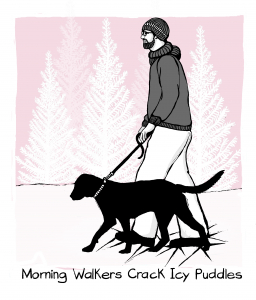
This is a new season and replaced ‘The First Icicle Forms’ as no one found any icicles. They may have been very well hidden or in fact they may not have actually existed this time. Our volunteers did find icy puddles though and a few mentioned overnight ice, and one talked of spotting puddles in the morning and I put as many comments together into one season as I possibly could – so this was a truly co-produced season. Maybe you recognise one of your comments?
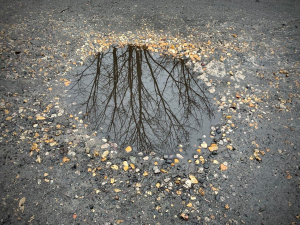
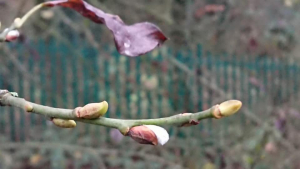
Bare tree in icy puddle taken on 3 December, budding trees from 4 December.
Season; 7 – 11 December: The Sky is Cold, Winter Comes
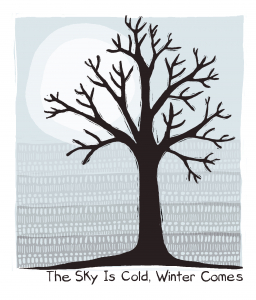
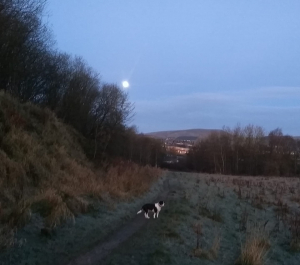
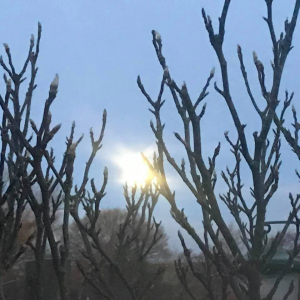
Images; autumn sunrise on 7 December, and sunrise behind bare branches also from 7 December.
It was, very, cold!
Season; 12 – 16 December: Evergreens Stand Alone
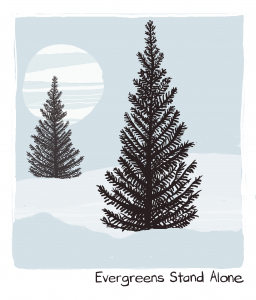
I love the detail of this image, it’s just a perfect vision of this time of year. Would also make a cracking Christmas card too!
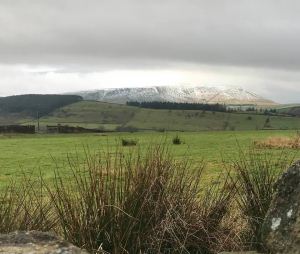
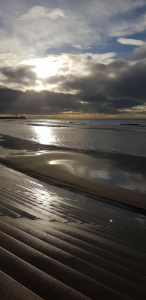
Images; Snow on Pendle hill taken on 14 December, 15 December was the sunny shore from one of our seekers who took a short break from Pendle.
Season; 17 – 21 December: The Sky is Dark
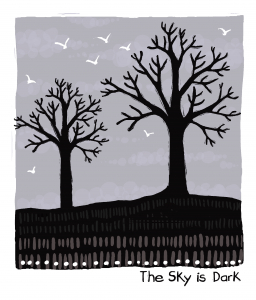
I remember when planning this project, I did an exercise with a group about finding their birthday seasons. Someone came up to me and told me this was their season, and they didn’t like it! I did think about changing it, but I’m glad I stuck to it. We need to get better at enjoying all the seasons and weather, and dark skies are a great time to stargaze, or to celebrate the Winter Solstice. And, luckily, 92% of you agreed this season was a keeper.
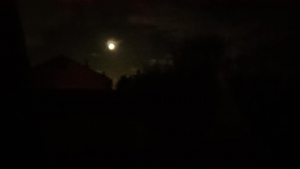
Image; Dark sky on 19 December.
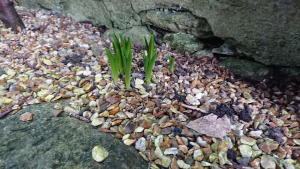
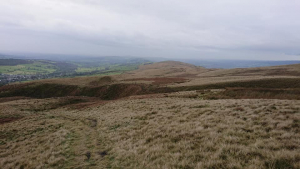
Images; Daffodils sprouting on 17 December and an expansive view taken on 17 December.
Are the daffodils really early this year to sprout? Or is it something that always happens and only time I noticed? Also, I wanted to share the image of the grasslands, which looks to be on Pendle Hill itself to me. Doesn’t that look like it will have a dark sky soon?
Season; 22 – 26 December: Frost Patterns Fallen Leaves
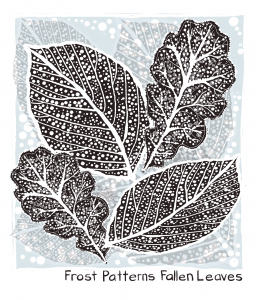
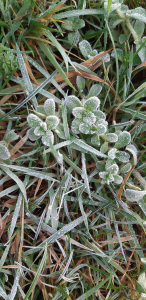
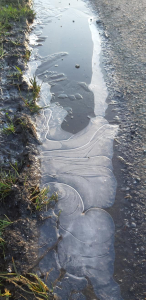
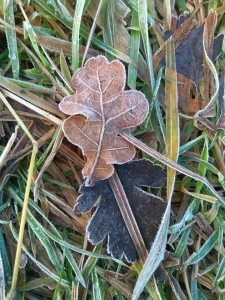
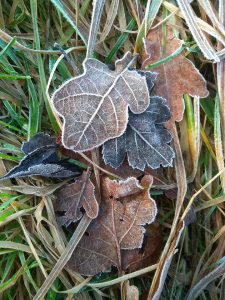
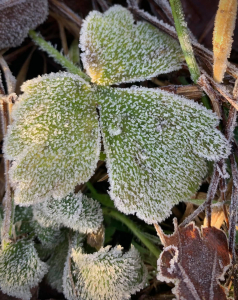
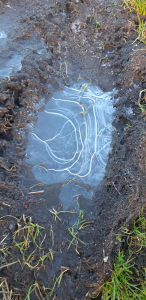
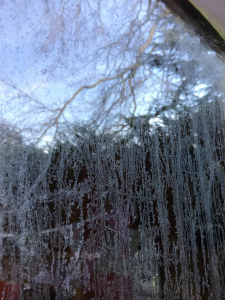
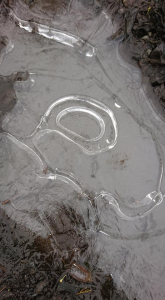
Images; frosty leaves on 22 December, frozen puddle and brown leaves taken 24 December, frosty green leaf and frosty puddle also taken on 24 December, then frosted window and another puddle from 25 December – Christmas day!
Our Christmas season. Whatever your thoughts on Christmas, it was clear we all love frost patterning leaves. ice, and frost in general are endlessly fascinating if you like pattern. Beautiful, fleeting, fascinating.
Season; 27 – 31 December: The Snow Creates Silence
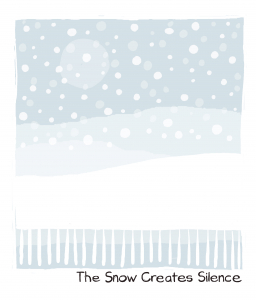
This is it, our very last season. I wrote in the email sent to our seekers, that we were taking a fairly large risk predicting snow, at the end of the year, and not just any snow but the soft fluffy kind which affects soundwaves and creates silence. Waking up on the 27 December, you would have never believed snow was coming.
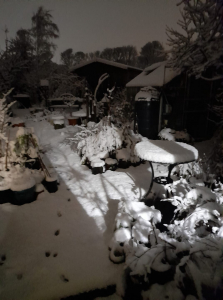
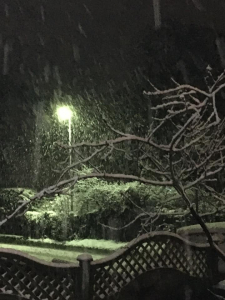
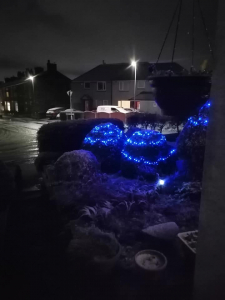
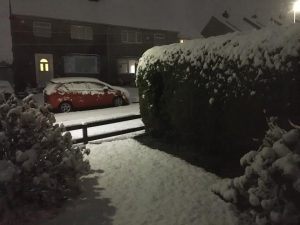
Images; All of the above were taken on 27 December.
But it did, snow fell. The right kind, on the right day, as though finally the weather had read my email and that the whole universe conspired to align the seasons for us. What a way to end.
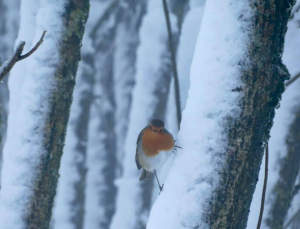
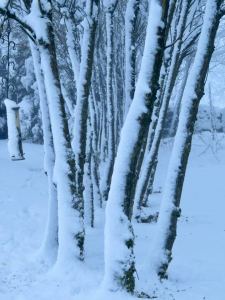
Images; Robin and bare trees from 28 December
Loved this stunning image of winter – snow, a robin, it’s just wonderful. Total fluke too according to the photographer!
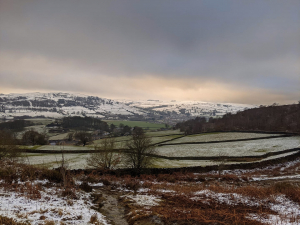
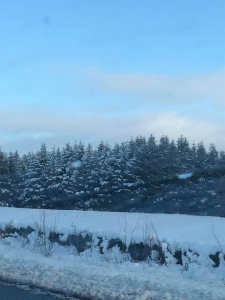
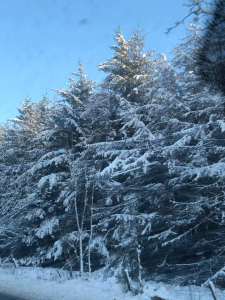
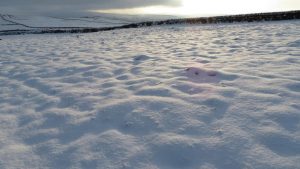
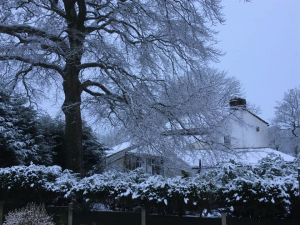
Images; Snowy hill from 28 December, snowy evergreens from 28 December, more snowy trees also from the 28 December, an undisturbed field of snow from 28 December and a snowy garden from 29 December.
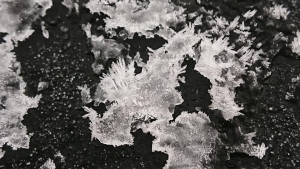
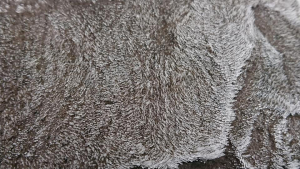
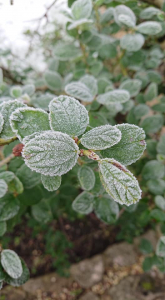
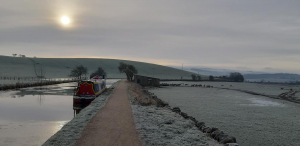
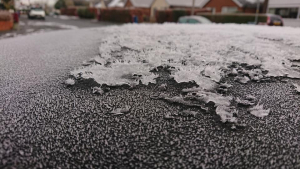
All the above images taken on 30 December; ice close up, ice looking like fur, frosted leaves, canal towepath frosty in the morning, ice on car roof
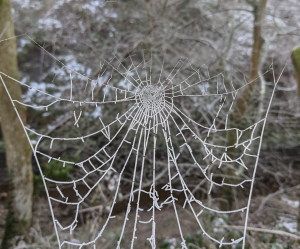
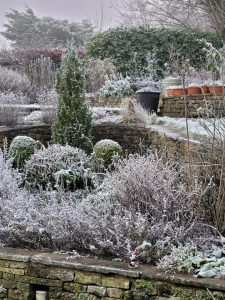
Images; 31 December frosted spiders web and snow tips in garden.
I can’t believe we ended on such a high. We got the very last season season so exactly right!
Thank you to all our volunteers. Did you know 310 people took part in seeking the seasons with us in 2020. They donated a huge amount of their time, and enthusiasm for nature and created a community which gave a lot of people a lot of solace during the most difficult of years.
Please note all photographs have been image described in their captions, to make sure this post is accessible to the widest possible audience.
If you have any questions or thoughts on this blog post, please send me an email at kirsty@theevaluator.co.uk – I’m afraid I had to turn comments off this blog, as it was just getting filled with spam robot stuff which no-one wants to see.
Thanks for reading, thanks for seeking.
Kirsty